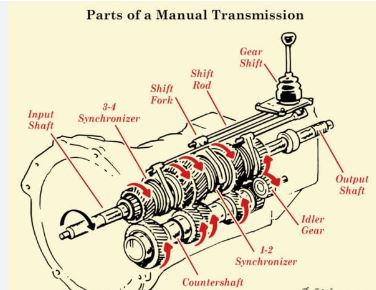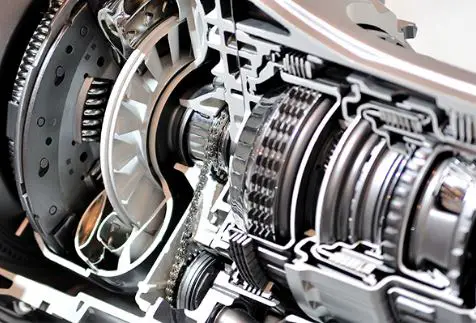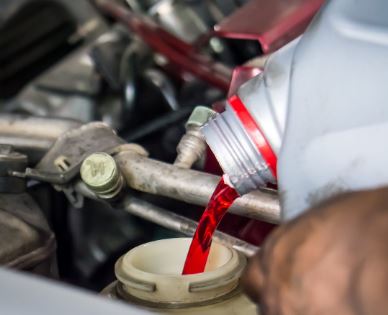Welcome! In this introductory section, we will be exploring the topic of manual transmissions and their fluid requirements. As many drivers know, manual transmissions have long been a popular choice for those who prefer a more engaging driving experience. However, one question that often arises do manual transmissions have fluid. In this article, we will delve into the importance of fluid in manual transmissions, its functions, and the consequences of neglecting this aspect of transmission maintenance. So, let’s get started and explore this important topic.
Understanding Manual Transmissions

Understanding manual transmissions is an essential skill for anyone who wants to operate a manual transmission vehicle. Unlike automatic transmissions that change gears automatically, manual transmissions require the driver to manually engage and disengage the clutch and shift gears using a gear stick and clutch pedal.
In a manual transmission, power is transferred from the engine to the wheels via a clutch and a series of gears. The clutch engages and disengages the engine from the transmission, allowing the driver to change gears by manually shifting the gear stick. The gears in a manual transmission are arranged in a specific sequence, usually an “H” pattern, with each gear serving a specific purpose, such as providing more power or speed.
To operate a manual transmission vehicle, the driver must have a basic understanding of the different gears and how they are used. Generally, lower gears are used for accelerating from a stop, while higher gears are used for cruising at higher speeds. Additionally, the driver must learn how to properly engage and disengage the clutch to prevent stalling or damage to the transmission.
It is also important to maintain proper fluid levels and regularly service the transmission to ensure it operates efficiently and avoids potential damage. Neglecting the transmission fluid or failing to properly shift gears can cause excessive wear on the transmission, resulting in costly repairs.
The Role of Fluid in Manual Transmissions

Manual transmissions are a popular choice for driving enthusiasts because of the level of control and engagement they offer. However, it’s important to remember that these transmissions rely on fluid to function properly. The fluid in manual transmissions has several crucial roles to play, which we’ll explore in this section.
Firstly, the fluid acts as a lubricant to minimize friction between the moving parts in the transmission. This reduces wear and tear on the transmission components and helps to extend the life of the transmission. Without proper lubrication, the gears and bearings in the transmission can grind against each other, leading to damage and eventually failure.
Secondly, the fluid in manual transmissions also helps to cool the transmission components. The heat generated during the operation of the transmission can cause the metal parts to expand, which can lead to damage over time. The fluid helps to absorb this heat and dissipate it, keeping the transmission operating within safe temperature ranges.
Thirdly, the fluid in manual transmissions acts as a hydraulic medium to facilitate the movement of gears within the transmission. It helps to transfer power from the engine to the wheels and allows the gears to engage smoothly and efficiently. Without fluid, the transmission can become difficult to shift, leading to driver frustration and potential damage to the transmission.
Finally, the fluid in manual transmissions can also help to prevent the buildup of contaminants within the transmission. Over time, dirt, debris, and metal shavings can accumulate within the transmission, which can lead to wear and tear on the transmission components. The fluid helps to flush these contaminants out of the transmission, reducing the risk of damage and prolonging the life of the transmission.
Signs of Low Fluid in Manual Transmissions

- Difficulty shifting gears: One of the most common signs of low transmission fluid is difficulty shifting gears. If you find it harder to shift gears or the gears grind, it could be due to low transmission fluid.
- Strange noises: A lack of fluid can cause unusual noises to come from your transmission. You might hear whining or buzzing sounds or even clunking and grinding noises. These sounds could indicate significant damage to the gears and other internal components of the transmission.
- Burning smell: If you notice a burning smell while driving, it could be due to low transmission fluid. A lack of fluid can cause the transmission to overheat and burn the fluid, resulting in a strong, unpleasant odor.
- Slipping gears: If your transmission slips out of gear, this could also be a sign of low fluid levels. The gears may slip or grind when you try to shift, making it difficult to maintain speed or acceleration.
- Leaks: One of the most obvious signs of low transmission fluid is a leak. If you notice reddish or brownish fluid under your car, it could be transmission fluid. Leaks can occur from the transmission pan, cooler lines, or other components.
The Importance of Regular Fluid Maintenance in Manual Transmissions
Regular fluid maintenance is crucial for the proper functioning and longevity of manual transmissions. The fluid in a manual transmission serves several important purposes, such as lubrication, cooling, and cleaning. Over time, the fluid in a manual transmission can break down, become contaminated, or simply wear out, which can lead to a range of issues and potential transmission failure.
Lubrication is one of the most critical functions of transmission fluid. Without sufficient lubrication, the gears, bearings, and other components in a manual transmission can grind against each other and cause significant damage. Transmission fluid also helps to keep the transmission cool by transferring heat away from the components. This is particularly important for manual transmissions, which generate more heat than automatic transmissions due to the constant shifting and engagement of gears.
In addition to lubrication and cooling, transmission fluid also helps to clean the transmission by removing debris and contaminants. Regular fluid maintenance helps to ensure that the transmission stays clean and free of contaminants.
Neglecting regular fluid maintenance can lead to a range of transmission problems, such as increased wear and tear on the components, reduced performance, and even transmission failure. Regular fluid changes and maintenance can help to prevent these issues, ensuring that the transmission remains in good condition and performing at its best.
Do Manual Transmissions Have Fluid
Yes, manual transmissions do have fluid, and it plays a critical role in their proper functioning. In manual transmissions, the fluid serves several functions, including lubricating the gears and bearings, providing cooling to the transmission, and helping to transfer power from the engine to the wheels.
The type of fluid used in manual transmissions can vary depending on the make and model of the vehicle. Some vehicles require a specific type of transmission fluid, while others may be compatible with a variety of fluids. It’s important to consult your owner’s manual or a trusted mechanic to determine the appropriate fluid for your vehicle.
Neglecting to maintain proper levels of fluid in a manual transmission can lead to significant problems. For example, insufficient fluid can cause increased friction and heat, which can damage the transmission’s components over time. It can also lead to increased wear and tear on the gears and bearings, potentially causing premature failure of the transmission.
Maintaining your manual transmission is crucial, and a key aspect of that is checking and changing the transmission fluid regularly. The recommended frequency for checking the fluid level is typically between every 30,000 to 60,000 miles, depending on the specific make and model of your vehicle. If you notice that the fluid appears low or dirty, it’s important to have it changed as soon as possible.
Manual Transmission Fluid Change Procedure

- Locate the drain plug on the transmission pan and place a drain pan underneath it.
- Remove the drain plug and allow the old fluid to drain completely into the pan.
- Once the fluid has drained, clean the drain plug and reinstall it.
- Locate the fill plug on the transmission and remove it.
- Insert a funnel into the fill hole and slowly pour new transmission fluid into the transmission until it begins to overflow from the fill hole.
- Reinstall the fill plug and wipe away any excess fluid from the transmission and surrounding areas.
- Turn on the engine and let it run for several minutes
- With the engine still running, shift through each gear to circulate the new fluid throughout the transmission.
- Check the fluid level and add more as needed until it reaches the appropriate level.
Common Problems with Manual Transmissions
- Clutch problems: The clutch is a critical component of a manual transmission, and it can wear out over time. Signs of clutch problems include difficulty shifting gears, slipping, or grinding noises.
- Gear synchronization issues: If you’re experiencing difficulty shifting gears, especially when the vehicle is moving, it may be due to gear synchronization issues. This can be caused by worn or damaged synchro rings or other components.
- Leaking or low fluid: Manual transmissions rely on fluid to keep the gears lubricated and functioning properly. Leaks or low fluid levels can cause excessive wear and tear, leading to transmission failure.
- Worn bearings: Bearings support the rotating shafts in the transmission and can wear out over time. Signs of worn bearings include whining or grinding noises while driving.
- Damage to the input or output shafts: If the input or output shafts are damaged, it can cause issues with shifting or cause the transmission to fail altogether.
FAQs About Do Manual Transmissions Have Fluid
What is the recommended interval for changing manual transmission fluid?
The recommended interval for changing manual transmission fluid varies depending on the make and model of your vehicle, as well as the type of driving you do. Refer to your vehicle’s owner’s manual for specific recommendations.
How do I check the fluid level in my manual transmission?
To check the fluid level in your manual transmission, locate the dipstick usually located under the hood of your car. Remove the dipstick and wipe it clean with a rag. The fluid level should be within the recommended range marked on the dipstick.
What type of fluid should I use in my manual transmission?
The type of fluid you should use in your manual transmission depends on the make and model of your vehicle. Refer to your vehicle’s owner’s manual or contact the manufacturer to determine the recommended fluid for your transmission.
What are the common signs of low fluid in a manual transmission?
Some common signs of low fluid in a manual transmission include difficulty shifting gears, grinding or shaking when shifting gears, and unusual noises coming from the transmission. Additionally, you may notice a burning smell or fluid leaking from the transmission.
What are some common problems that occur in manual transmissions?
Some common problems that occur in manual transmissions include worn or damaged gears, worn or damaged synchros, a worn clutch, a faulty clutch master or slave cylinder, and low or dirty fluid levels. These issues can cause difficulty shifting gears, grinding or shaking when shifting gears, and unusual noises coming from the transmission.
Final Thought
In the end, the question of do manual transmissions have fluid is a valid one. The answer is yes, manual transmissions do require fluid in order to function properly. The fluid used in manual transmissions serves as both a lubricant and a coolant and is essential in keeping the transmission’s gears and bearings operating smoothly. It is important to note that different types of manual transmissions may require different types of fluid, so it is crucial to consult the owner’s manual or a certified mechanic when selecting a transmission fluid. Overall, proper maintenance and fluid levels are critical to ensuring the longevity and optimal performance of a manual transmission.
Related Topics:
- Do Manual Transmissions Have Fluid
- Can Low Transmission Fluid Cause Overdrive Light to Flash
- Does Transmission Fluid Evaporate
- How to Get Transmission Fluid Out of Clothes
- Can Transmission Fluid Freeze
- Will Transmission Fluid Clean Diesel Fuel Injectors
- Can You Mix Synthetic Transmission Fluid With Regular Transmission Fluid
- Automatic Transmission High RPM Before Shifting
- Does Transmission Fluid Expire
- Can You Start an Engine Without Transmission Fluid


